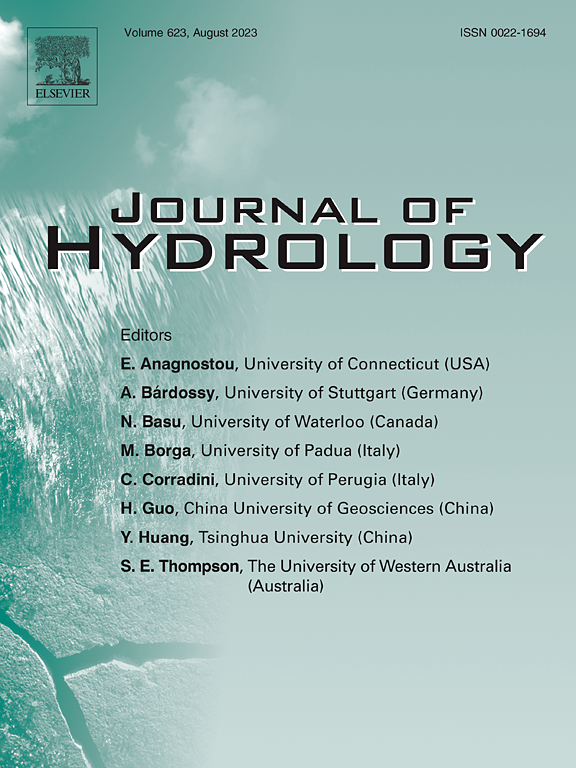Data-driven collaborative safety evaluation for seepage reliability of embankments considering spatial variability
IF 5.9
1区 地球科学
Q1 ENGINEERING, CIVIL
引用次数: 0
Abstract
Seepage safety analysis in real embankments considering hydraulic parameters’ spatial variability is crucial. However, random seepage analysis in embankments is often lack of efficiency and accuracy for evaluation of low failure incidents based on complex random fields and fine finite element models. To improve both analytical efficiency and accuracy, a data-driven collaborative safety evaluation framework that integrates the Optimized Linear Estimation Method (OLEM) with Refine Subset Simulation (RSS) has been proposed. Firstly, the random field of the uncertain parameters of the soil–water characteristic curve (SWCC) is efficiently discretized using OLEM based on the results of deterministic analysis, and a sensitivity analysis is performed accordingly. Then, considering various combinations of spatial variability degrees of hydraulic parameters, RSS is applied to the rough mesh model for random finite element analysis, while fine element cases are generated using the Response Conditioning Method (RCM) for further collaborative safety evaluation. Finally, the accuracy of the method is validated by comparing it with the Monte Carlo Simulation (MCS) based on the same 3D rough model, and the relevant seepage safety analysis is conducted. The findings reveal that the coefficient of variation (COV) and autocorrelation distance of the permeability coefficient Ks in the filling section significantly impact the dam’s seepage safety. Despite strong spatial variability in parameters, the probability of seepage failure remains below 10-3. The RSS method reduces computation time to 1/10 compared to MCS at a 10-3 failure level.
考虑空间变异性的路堤渗流可靠性数据驱动协同安全评价
考虑水力参数空间变异性的实际路堤渗流安全分析至关重要。然而,基于复杂随机场和精细有限元模型的堤防随机渗流分析在评估低破坏事件时往往缺乏效率和准确性。为了提高分析效率和准确性,提出了一种数据驱动的协同安全评估框架,该框架将优化线性估计方法(OLEM)与细化子集模拟(RSS)相结合。首先,在确定性分析结果的基础上,利用OLEM对土壤-水特征曲线不确定参数随机场进行有效离散,并进行敏感性分析;然后,考虑水力参数空间变异性程度的不同组合,将RSS应用于粗网格模型进行随机有限元分析,同时利用响应条件法(Response Conditioning Method, RCM)生成精细单元案例,进一步进行协同安全性评估。最后,通过与基于相同三维粗糙模型的蒙特卡罗模拟(Monte Carlo Simulation, MCS)进行对比,验证了该方法的准确性,并进行了相关的渗流安全性分析。研究结果表明,坝体填筑段渗透系数k的变异系数(COV)和自相关距离对坝体渗流安全有显著影响。尽管渗流参数具有较强的空间变异性,但渗流破坏的概率仍然小于10-3。与MCS相比,RSS方法在10-3故障水平下将计算时间减少到1/10。
本文章由计算机程序翻译,如有差异,请以英文原文为准。
求助全文
约1分钟内获得全文
求助全文
来源期刊

Journal of Hydrology
地学-地球科学综合
CiteScore
11.00
自引率
12.50%
发文量
1309
审稿时长
7.5 months
期刊介绍:
The Journal of Hydrology publishes original research papers and comprehensive reviews in all the subfields of the hydrological sciences including water based management and policy issues that impact on economics and society. These comprise, but are not limited to the physical, chemical, biogeochemical, stochastic and systems aspects of surface and groundwater hydrology, hydrometeorology and hydrogeology. Relevant topics incorporating the insights and methodologies of disciplines such as climatology, water resource systems, hydraulics, agrohydrology, geomorphology, soil science, instrumentation and remote sensing, civil and environmental engineering are included. Social science perspectives on hydrological problems such as resource and ecological economics, environmental sociology, psychology and behavioural science, management and policy analysis are also invited. Multi-and interdisciplinary analyses of hydrological problems are within scope. The science published in the Journal of Hydrology is relevant to catchment scales rather than exclusively to a local scale or site.
 求助内容:
求助内容: 应助结果提醒方式:
应助结果提醒方式:


